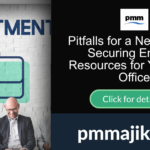This post is going to cover the important topic of continued project funding. While a lot of effort goes into preparing the original business case and securing the original budget, the reality is that this is only the first budget approval of many over the life time of a project.
The Project Funding Challenge
It is quite common for a project to span 1 or more years. This also means that the project can span 1 or more budget cycles.
What this means is that regardless of the overall budget being approved as part of the business case, the budget in reality is only approved for a single budget cycle. For example, a project business case is approved for a 5 year project at an estimated cost of $5 million. The reality may be that the year 1 budget is included in the annual budget at a cost of $1 million and the project manager and sponsor will need to seek approval for year 2, year 3, etc.
This means that the project manager needs to be prepared to make the appropriate case and submission to ensure the continued funding for their project. Failure to do this can impact progress and may mean the project being stopped.
Budget Planning Activities
A smart project or PMO manager can take the following action to give them the best chance to secure ongoing funding.
Understand Budget Process
Make sure you know how the annual budget process works and the key dates. Don’t rely on being told, proactively seek the information. If you are told the information is not available, start planning anyway.
Inflight Projects
Build a list of the current inflight projects. This is particularly important where there are a number of projects. This helps ensure that projects are not missed.
Accurate Budget
For all of the projects captured, make sure that you have the accurate budget estimates, actuals for the year and estimates to complete. For multi year projects, you will need the breakdown by year so you know exactly how much you need for the coming budget cycle.
Restate Benefits
Ideally each project should have a benefit. Where this is a financial benefit, you should restate the expected benefit that will be realised. This is helpful to support the budget as people who review the input can see what the investment will achieve.
Build Funding Case
Using the benefits as one of the inputs, it is worthwhile preparing a brief summary on why it makes sense to continue backing a given project. Just because you fully understand the reasons, many who are not close to the project may not. You essentially need to be “selling” the project to those making the decisions.
It is important as part of this process to make sure you explain why you are confident with the budget ask and, that you are able to spend the budget i.e. by onboarding required resources in the timescale.
Seek Approval
Make sure you check with the people running the budget process that they have all the information they need. Ask when decisions will be made and ask for approval.
Where decisions are being delayed, make sure people are aware of the consequence i.e. loss of key resources, delays, etc.
Plan
So that you are ready to take action, prepare a plan based on when you will get budget approval. This includes completing any preparatory work ahead of the approval i.e. creating job specifications, raising roles, etc.
This is important so that you do not get caught “flat footed” and it takes you time to re-act and mobilise to the budget approval.
Summary
The smart planning around the ongoing funding of your project is crucial. Taking notice of these activities will give you the best chance of success.






